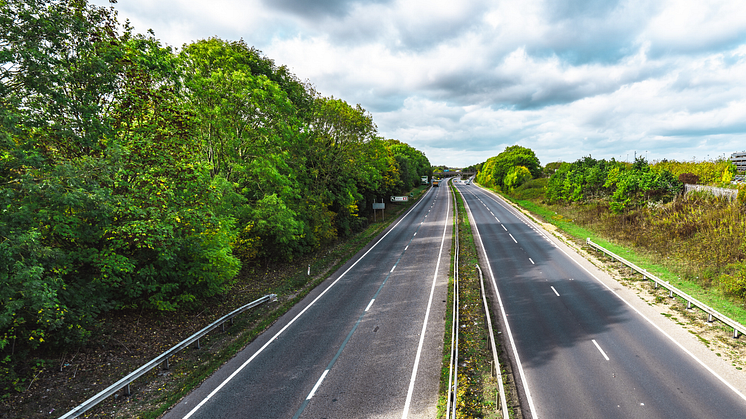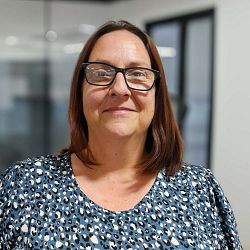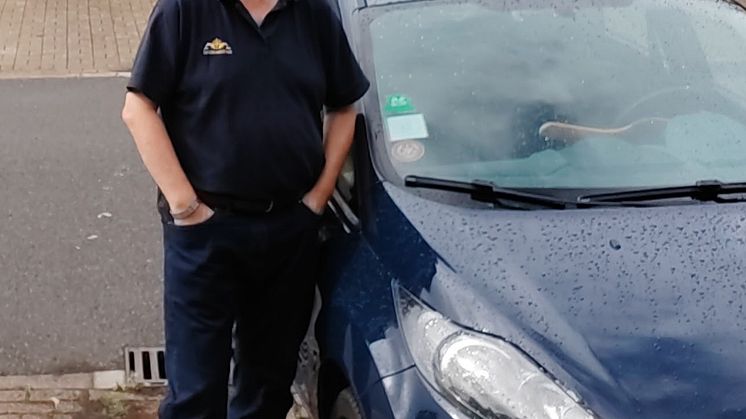
Blog post -
Driving with hearing loss
By David Sherratt
I had hearing loss from an early age following an illness causing nerve damage to my ear, which progressively worsened over the years. I had always been afraid to learn to drive in the past due to the difficulties of communication, and the lack of help available to me at the time.
Instead, after my father bought me a second hand moped at the age of 17 and gave me a few lessons on basic machine control around the car park, I learned to ride a bike. This was in the days before the CBT and training groups, so I was allowed to just put on L plates and be let loose on the roads.
When I suddenly lost my hearing completely, around 45 years ago, it didn't affect me greatly as I had been riding for a few years and, let's face it, wearing a helmet means that your hearing is somewhat masked anyway.
However, after more than 38 years riding in all weathers, and following surgery for arthritis on both my hands, I decided it was time to hang up the leathers, grasp the nettle and convert to four wheels.
This presented a challenge as, obviously, I would not be able to lip-read a driving instructor whilst also concentrating on my driving (the main reason I had put it off for so long), so it needed some thought on how an instructor could communicate and give me instructions.
Fortunately, one of my colleagues at work at the time was also a qualified driving instructor, so he was able to give me my first few drives to gain confidence in a car. My years of riding motorcycles helped and, having also passed the IAM RoadSmart Advanced Rider course (thanks here should go to my patient and experienced observer Roy Hobday), I was already aware of road conditions, hazards, the Highway Code, and the roadcraft system of riding /driving.
Before beginning the first lesson we had a long chat and agreed on some simple clear hand signals for the basic instructions, e.g. turning left/right ahead or taking the third exit at the roundabout. Additionally, he kept a notebook handy so that he could write down any points/issues which we would discuss once I had safely pulled over to the side of the road.
This worked very well, although I initially found the transition from motorcycle to car a little difficult, and I was able to pass this on to my next driving instructor (unfortunately my colleague moved away so couldn’t continue with the lessons), and the examiner when it came to take my DOT (Department Of Transportation) hearing test.
Subsequently, after driving for a year or two, and getting more confident, I decided to apply for the IAM RoadSmart Advanced Driver course. I was assigned to the Thames Valley Group (TVGAM), and was appointed an Observer, Andy Hunter.
It was fortunate that I already knew Andy from TVGAM, as he was also an Observer there and had previously taken me out for a couple of observed rides, so was aware of my hearing loss.
Andy and I again agreed on simple clear hand signals and instructions, and I progressed to my advanced test, which I just about passed. This was when people were not so disability aware, so there were some issues on the test, such as the examiner not understanding clearly how to speak for me to lip read, or allowing extra time so that we could pull over and discuss the next section, or any questions I had, writing it down if necessary. And my trying to concentrate on my driving whilst also trying to anticipate the examiners next instructions did lead to a couple of minor mistakes.
As it had been over 10 years since I passed my advanced driving test, I recently decided to have a refresher drive and, after emailing the Chief Observer at TVGAM I was assigned an Observer to begin my refresher training.
The refresher drive was much better, despite my initial nerves, as my Observer Tony Browne had some hearing loss himself, and after the drive Tony encouraged me to retake my advanced test and apply for Fellows membership.
I did so and was assigned an Examiner, David Fryer, and I had a couple more drives with Tony to iron out one or two minor issues and build my confidence before the test.
I found that David was more disability aware, having tested other candidates with hearing loss, and he emailed me beforehand to check if I had any specific requests/needs.
On the day he took more time to put me at ease, wrote things down if I had difficulty with lip reading him, and gave very clear hand signals, and instructions, during the drive.
I was astonished, and very pleased, that not only did I pass and qualify for my Fellows, but I had also achieved a F1RST!
Whilst generally a person driving with hearing loss is no different from anyone else there are some obvious challenges: not being able to hear surrounding traffic, emergency vehicles sirens, or whether there's an abnormal noise coming from the car (engine noise, squeaking suspension or wheel bearings etc) but these can be overcome.
Increasing observation and caution whilst driving, especially in heavy traffic or on tight country roads, and using the mirrors more ensures I am kept aware of what is happening around me and can avoid any 'incidents’.
As with a hearing driver, you also develop a 'feel’ for the car, and regular checking, and servicing, helps keep the car in good condition and prevent against sudden breakdowns.
There are also certain advantages to driving when deaf: not being distracted by annoying sat-navs, in-car entertainment systems, or passengers chattering away, so I can just concentrate and enjoy the drive.
I now enjoy my driving and using my advanced training and would encourage anyone who has a hearing loss and is hesitant about learning to drive to go for it. I would also encourage those who already drive to take the IAM RoadSmart Advanced Driver course.





